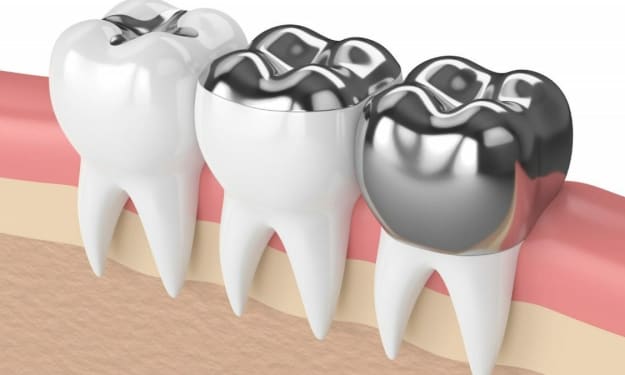Restless Legs No More: Exercise for Improved Circulation
Kick Discomfort to the Curb: How Physical Activity Can Soothe Your Legs and Boost Blood Flow
Do you ever find yourself lying in bed, desperate for sleep, but your legs just won't stop moving? That uncomfortable, irresistible urge to move your legs, often accompanied by unusual sensations, could be Restless Legs Syndrome (RLS).
While it might sound like a made-up condition, RLS is very real and can significantly impact your quality of life. But here's some good news: exercise might be the key to finding relief.
Let's dive into how getting active can help calm those restless legs and improve your overall circulation.

Understanding Restless Legs Syndrome
Before we jump into solutions, let's quickly review what RLS is. Also known as Willis-Ekbom Disease, RLS is a neurological disorder characterized by an overwhelming urge to move the legs, often accompanied by uncomfortable sensations described as crawling, creeping, pulling, or throbbing.
These symptoms typically worsen in the evening or at night when you're trying to relax or sleep.
While the exact cause of RLS isn't fully understood, poor circulation is thought to play a role in many cases. This is where exercise comes into the picture.
The Circulation Connection
Our circulatory system is like a complex highway network, delivering oxygen and nutrients to every part of our body and removing waste products.
When circulation is poor, especially in the legs, it can lead to a range of issues, including the symptoms associated with RLS.
Exercise can help improve circulation in several ways:
1. Strengthens the heart: A stronger heart pumps blood more efficiently throughout the body.
2. Improves blood vessel function: Regular exercise helps blood vessels dilate more easily, allowing for better blood flow.
3. Increases muscle contractions: The contraction and relaxation of muscles during exercise help push blood through the veins back to the heart.
4. Reduces inflammation: Exercise has anti-inflammatory effects, which can improve overall vascular health.
Exercises to Try
Now that we understand how exercise can help, let's look at some specific activities that could provide relief from RLS symptoms and improve your circulation:
1. Walking: It's simple, accessible, and effective. Aim for a brisk 30-minute walk most days of the week.
2. Swimming: This low-impact exercise provides a great workout for your entire body while being gentle on your joints.
3. Cycling: Whether on a stationary bike or outdoors, cycling is an excellent way to get your legs moving and your blood flowing.
4. Yoga: Certain yoga poses, especially those that involve leg stretches, can be particularly beneficial for RLS.
5. Resistance Training: Strengthening your leg muscles can improve circulation and potentially reduce RLS symptoms.
6. Tai Chi: This gentle, flowing exercise combines movement with mindfulness and has shown promise in managing RLS symptoms.
7. Ankle Pumps and Calf Raises: These simple exercises can be done anywhere, even while sitting, to promote blood flow in your legs.
Remember, consistency is key. It's better to do moderate exercise regularly than to have intense, infrequent workouts.
Timing is Everything
When it comes to exercising for RLS relief, timing can be crucial. While regular exercise is generally beneficial, intense exercise close to bedtime might actually exacerbate symptoms for some people. Here are some tips:
1. Try exercising earlier in the day, ideally in the morning or afternoon.
2. If evening is your only option, opt for gentler exercises like yoga or light stretching.
3. Experiment with different times to see what works best for you.
Beyond Exercise: Additional Tips for Managing RLS
While exercise is a powerful tool for managing RLS, it's most effective when combined with other healthy habits. Here are some additional strategies to consider:
1. Maintain a regular sleep schedule: Go to bed and wake up at the same time each day.
2. Create a relaxing bedtime routine: This might include warm baths, gentle stretching, or meditation.
3. Avoid triggers: Common RLS triggers include caffeine, alcohol, and nicotine, especially in the evening.
4. Stay hydrated: Proper hydration is important for good circulation.
5. Consider your diet: Some people find relief by increasing their intake of iron-rich foods or vitamin D (under a doctor's guidance).
6. Use heat or cold: Alternating heat and cold packs on your legs might provide relief.
7. Massage: Gentle massage of the legs can help improve circulation and ease discomfort.
8. Compression socks: These can help improve circulation in your legs, especially if you sit or stand for long periods.
When to Seek Medical Help
While exercise and lifestyle changes can be very effective for managing RLS, it's important to consult with a healthcare professional if your symptoms are severe or persistent. They can rule out other conditions and discuss additional treatment options if needed.
RLS can sometimes be a symptom of an underlying condition like iron deficiency anemia, kidney disease, or peripheral neuropathy. In these cases, treating the underlying condition may resolve the RLS symptoms.
The Mind-Body Connection
It's worth noting that stress and anxiety can worsen RLS symptoms. Fortunately, exercise is a great stress-buster! Activities like yoga, tai chi, and even a simple walk can help calm your mind as well as your legs. Consider incorporating some mindfulness or relaxation techniques into your routine for an extra boost.
Staying Motivated
Starting a new exercise routine can be challenging, especially when you're dealing with the discomfort of RLS. Here are some tips to help you stay motivated:
1. Start small: Even 10 minutes of exercise a day is better than none.
2. Find activities you enjoy: You're more likely to stick with exercise if it's fun.
3. Track your progress: Keep a log of your exercise and how it affects your RLS symptoms.
4. Exercise with a friend: Social support can help keep you accountable.
5. Reward yourself: Set goals and treat yourself when you reach them.
Conclusion
Living with Restless Legs Syndrome can be frustrating, but it doesn't have to control your life. By incorporating regular exercise into your routine, you're not only addressing the symptoms of RLS but also improving your overall health and well-being.
Remember, everyone's experience with RLS is unique, and what works for one person may not work for another. Be patient with yourself as you explore different types of exercise and find what works best for you. With time and consistency, you may find that those restless legs become a thing of the past, replaced by better sleep, improved circulation, and a higher quality of life.
So why not take that first step today? Your legs (and the rest of you) will thank you!
About the Creator
Arif Chowdhury
Curious explorer of knowledge, devouring new topics and sharing my discoveries through writing.
Enjoyed the story? Support the Creator.
Subscribe for free to receive all their stories in your feed. You could also pledge your support or give them a one-off tip, letting them know you appreciate their work.






Comments
There are no comments for this story
Be the first to respond and start the conversation.